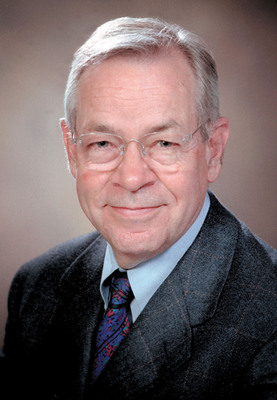SynCardia Systems, Inc. Continues to Make Progress for Approval of the SynCardia Heart for Permanent Use to Save Patients Who Are Unlikely to Receive Another Donor Heart
SynCardia Systems, Inc. is moving forward to gain FDA approval to use the SynCardia temporary Total Artificial Heart as destination therapy (a permanent replacement heart), which could save patients whose donor heart transplant is failing and are unlikely to receive another heart transplant.

The FDA has approved a Humanitarian Use Device (HUD) designation for the 70cc Total Artificial Heart to be used for destination therapy. The next step is for SynCardia to submit a Humanitarian Device Exemption (HDE) application to the FDA. Once approved, the HDE will allow up to 4,000 U.S. patients annually who are not transplant-eligible to receive the 70cc Total Artificial Heart for destination therapy.
Watch Dr. Jack Copeland’s discussion on heart graft failure. http://www.syncardia.com/medical-professional-videos/transplant-graft-failure-the-syncardia-total-artificial-heart/itemid-1588.html
The SynCardia Heart, the world’s first and only FDA, Health Canada and CE approved Total Artificial Heart, originally was used as a permanent replacement heart. In 1985, respected heart transplant surgeon Dr. Jack Copeland was the first to use the SynCardia Heart as a bridge to transplant for patients who urgently needed a heart transplant but for whom a matching donor heart was not available.
In a video-recorded presentation to physicians, Copeland, a SynCardia co-founder, points out that graft failure is the major cause of death among heart-transplant patients. Referring to statistics from the International Society of Heart Lung Transplantation, Copeland points out that all graft failure-related causes, including rejection and coronary vasculopathy, account for 44% of transplant deaths within five years and 37% within 15 years. “It’s killing most transplant patients,” he says.
Yet only 2% of transplant failure patients get new heart transplants, largely due to the shortage of donor hearts and a growing waiting list. Approximately 3,800 patients are waiting for a donor heart on any day, while 2,300 donor hearts are available annually in the United States. The supply of donor hearts in the U.S. has been flat for over 20 years and has generally been declining inEurope. Approximately 16% of patients become too sick or die while waiting for a matching donor heart transplant.
“The other people must be dying because what’s the alternative?” says Copeland. “The other alternative, of course, is the SynCardia Total Artificial Heart.”
Copeland suggests that the SynCardia Heart also would greatly extend the lives of heart transplant patients who could not qualify for a new heart transplant because of age or other medical issues. With the SynCardia Heart and the wearable Freedom® portable driver that powers it, a patient could go home to live a near-normal life. “With the Freedom driver, (you) possibly could be thinking about a destination type of treatment,” he says.
He also submits that using the SynCardia Heart for some of these patients “helps buy some time” and is currently approved under the SynCardia’s Total Artificial Heart “bridge to transplant” indication. Like a human heart transplant, the SynCardia Total Artificial Heart replaces both failing heart ventricles and the four heart valves. It eliminates the symptoms and source of end-stage biventricular heart failure in which both heart ventricles no longer can pump enough blood for the patient to survive.
In 30 years of use, the valves in the SynCardia Total Artificial Heart have never failed. The diaphragms, which pump blood in and out of the ventricles, have a failure rate of less than one-half of 1% in close to 1,300 implants.
People have lived for months or years with the SynCardia Total Artificial Heart while waiting for donor hearts. The longest a patient was supported by the SynCardia Heart was for close to four years before his successful donor heart transplant.
- Read how a Pennsylvania man survived graft failure with a SynCardia Total Artificial Heart.
- Watch video of Dr. Jack Copeland discussing how patients could survive graft failure.
CAUTION – The Freedom portable driver is an investigational device, limited by United States law to investigational use.
About the SynCardia temporary Total Artificial Heart
SynCardia Systems, Inc. (Tucson, AZ) is the privately-held manufacturer of the world’s first and only FDA, Health Canada and CE approved Total Artificial Heart. Originally used as a permanent replacement heart, the SynCardia Total Artificial Heart is currently approved as a bridge to transplant for people suffering from end stage heart failure affecting both sides of the heart (biventricular failure). There have been more than 1,260 implants of the Total Artificial Heart, accounting for more than 350 patient years of life on the device.
Similar to a heart transplant, the SynCardia Total Artificial Heart replaces both failing heart ventricles and the four heart valves. It is the only device that eliminates the symptoms and source of end stage biventricular failure. Unlike a donor heart, the Total Artificial Heart is immediately available at 97 SynCardia Certified Centers worldwide with 39 others in the process of certification.
The Total Artificial Heart provides immediate, safe blood flow of up to 9.5 liters per minute through each ventricle. This high volume of blood flow helps speed the recovery of vital organs, helping make the patient a better transplant candidate.
For additional information: http://www.syncardia.com/
SOURCE SynCardia Systems, Inc.

